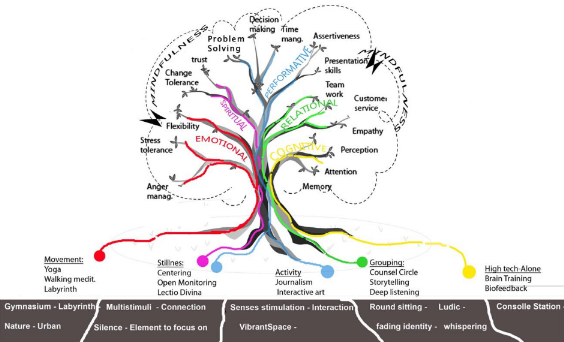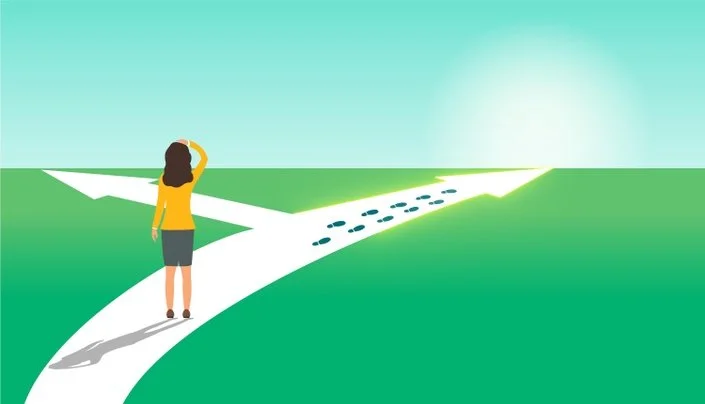Contemplative Spaces: towards a new design approach
/Meditation practices: architectural features + outcomes. Graphic by Giuseppina Ascione
Human homeostasis is the capacity of our body to constantly adjust to environmental conditions. These bodily adjustments are optimized for survival, and they operate through a complex set of interacting metabolic reactions. We sweat when we are hot, and we need to drink when the surrounding environment is too dry. It is about a dynamic equilibrium, where changes happen constantly. We are not always aware of these changes, except when they are sudden and large, leading to positive or negative bodily responses depending on how much the new environment leads to comfort or stress.
Physically, the environment can strongly influence the mental aspects of its occupants. Designers can take advantage of such potential to modulate different mental attributes, be they emotional, cognitive or relational.
Churches are the first examples of design exploiting physical parameters to evocate a specific mental status. In the Christian cultures, these types of buildings have been built with the goal of inducing a stronger sense of belief and a drive towards a superior entity in a collective ritual. John P. Eberhard makes a distinction, in his book (1), between “spiritual spaces” and “sacred spaces”: the first being designated for some religious purpose and the second being defined as any space that evokes special transcendent feelings within the visitor. But in both cases we are far from a contemplative state of mind is, that is to say a self-observation over mental state.
Meditation/Prayer Room at the Munich Airport - image by Giuseppina Ascione
Therefore contemplative spaces are not to be considered as isolated building typologies, just like churches or sanctuaries, but as integrated accessories for different building uses.
Usually, we are familiar with the idea of architecture that speaks to occupants and directs them towards the activity they are involved in, suggesting movements and actions. Less common is an architecture that “listens” to its occupants, giving people the opportunity to reach a climax to digest what they receive passively during their staying, and letting them complete actively their own personal experience.
Every performance and activity related to different building uses (commercial, institutional, educational, etc.) will require a specific contemplative space for each meditation practice. Meditation improves the quality of our lives not only because it helps getting rid of bad feelings related to stress anxiety and depression, but it is instrumental to achieve or improve specific required skills. In working environments a short break devoted to the practice can help staff recover from mental fatigue or improve creativity, while at schools kids can balance hyperactivity with improved concentration.
The transformative and developing capacities deriving from contemplative practices, joint to innovation brought from invisible technology, on the basis of a more sustainable and responsible progress, are changing the identity of a human being who is willing to understand and define his individuality in order to get control over it. The beneficial effects of contemplation in every aspect of our lives will enrich our daily routine and become an activity just like eating and sleeping.
A new daily activity - Image by Giuseppina Ascione
The implications infer that there is a lot of work ahead to define a brand new design agenda, a new chapter to face the complexity that different cases and variables represent: different performance expectations, various cultural backgrounds, individual psychological profiles, all to be coordinated with as many solutions as each singular issue can get.



















